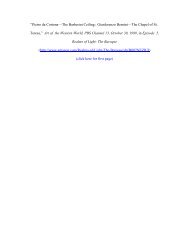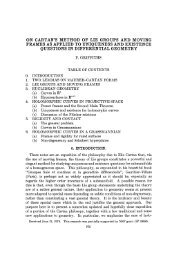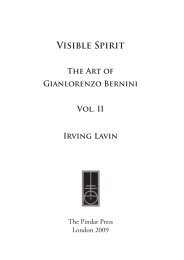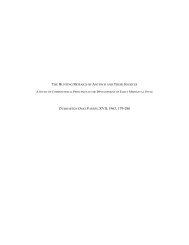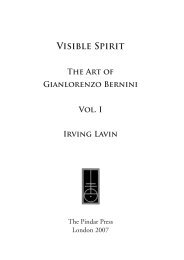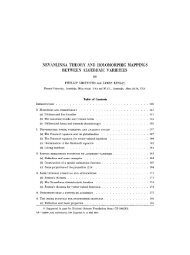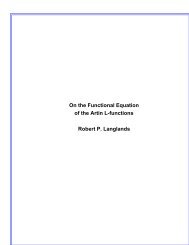View PDF - Project Euclid
View PDF - Project Euclid
View PDF - Project Euclid
Create successful ePaper yourself
Turn your PDF publications into a flip-book with our unique Google optimized e-Paper software.
490 PHILLIP A. GRIFFITHS<br />
For this we decompose<br />
into its tangential part<br />
and normal part<br />
Z Z "4r Zn<br />
Zt Z a,e,<br />
Zn E z.e..<br />
We may consider zn as a holomorphic section of the line bundle Q in (4.35), and<br />
the curvature matrix for this line bundle is the (1, 1) form<br />
(4.36) q -0c] log iiz.ii<br />
Setting z, zn we obtain a unitary frame {el, ", e,; z.} for F. The<br />
Chern form c(O) may be computed using this frame, as well as the previous<br />
one {Z0, ", Z,}. The curvature matrix of F in the first frame will be denoted<br />
by<br />
To compute it we use the second fundamental form of T(M) in F--the point is<br />
that we know the curvature matrix of T(M) and qY of Q, and want to determine<br />
from these and the second fundamental form the curvature matrix of F.<br />
Summing repeated indices the second fundamental form of T(M) C F is given<br />
by the vector of (1, 0) forms<br />
co,,. (de,,<br />
-<br />
It follows that<br />
12.. co,. A d,.<br />
(to check signs, recall that curvatures decrease on sub-bundles and increase on<br />
quotient bundles). There are similar formulas for 1],. and 12.,. From (4.37) we<br />
infer that<br />
(4.38) cI(OM) Cl(’M) + IM




